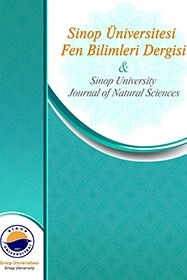Gamma Katlanmış-Normal Dağılım Önerisi
Yaşam ve güvenilirlik çalışmalarında ortaya çıkan negatif olmayan ölçümleri modellemek için yeni esnek dağılımların geliştirilmesi, İstatistikte dikkat çeken bir araştırma alanıdır. Pozitif tanımlı ve en çok tercih edilen bir biçim olan Gamma dağılımı, bu tür geliştirmeler için bir temel oluşturur. Bir Gamma değişkenini başka bir sürekli rastgele değişken (X) ile dönüştürmenin, Gamma-X dağılım ailesini oluşturduğu iyi bilinmektedir. Bu prensibi takip ederek, X değişkenini de yine pozitif tanımlı olan Katlanmış-Normal dağılımlı tanımlayarak, burada yeni bir dağılım ailesi önermeye çalıştık. Gamma Katlanmış-Normal dağılım (GFN) olarak adlandırılan önerimiz, Gamma Yarı-Normal dağılımının bir genellemesidir ve daha fazla sayıda serbest tahminli parametreler içerir. Bu çalışma, GFN dağılımının momentler gibi bazı matematiksel özelliklerini geliştirmekte ve bir simülasyon çalışması aracılığıyla bilinmeyen parametreler için tahmin prosedürünü göstermektedir. Bu yeni dağılımın performansını, Katlanmış-Normal, Yarı-Normal ve Gamma Yarı-Normal dağılımları ile karşılaştırmak için ise ayrı bir simülasyon çalışması da gerçekleştirilmiştir. Ayrıca, bir gerçek hayat veri setinin analizi yapılarak yeni önerimizin uygulamada önemi gösterilmiştir.
Anahtar Kelimeler:
Gamma-X Ailesi, Gamma Yarı-Normal, Katlanmış-Normal, Yaşam Verisi, Negatif Olmayan Modelleme
The Proposal of Gamma Folded-Normal Distribution
Development of new flexible distributions for modeling non-negative measurements occuring in lifetime or reliability studies is a prominent research area in Statistics. As being the most favoured positive definite form, the Gamma distribution poses a basis for such improvements. It is well known that transforming a Gamma variable with another continuous random variable (X) creates Gamma-X family of distributions. Following this principle, we here attempted to define the X variable as Folded-Normal distributed which is also positive definite so as to propose a new family of distributions. Named as Gamma Folded-Normal distribution (GFN), our proposal is a generalization of Gamma Half-Normal distribution and contains more freely estimated parameters. This study evaluates some mathematical properties of GFN distribution such as moments and illustrates the estimation procedure for unknown parameters through a simulation study. A separate simulation is also conducted to compare the performance of this new distribution with the Folded-Normal, Half-Normal and Gamma Half-Normal distributions. Besides, the practical importance of our new proposal is illustrated by analyzing a real world data set.
___
- Alzaatreh, A., Lee, C., & Famoye, F. (2013). A new method for generating families of continuous distributions. Metron, 71(1), 63–79. https://doi.org/10.1007/s40300-013-0007-y
- Alzaatreh, A. & Knight, K. (2013). On the gamma-half nor¬mal distribution and its applications. Journal of Modern Applied Statistical Methods, 12(1), 103-119. https://doi.org/10.22237/jmasm/1367381640
- Bland, J. M., & Altman, D. G. (1999). Measuring agreement in method comparison studies. Statistical Methods in Medical Research, 8, 135–160. https://doi.org/10.1177/096228029900800204
- Leone, F. C., Nelson, L. S., & Nottingham, R. B. (1961). The folded normal distribution. Technometrics 3, 543–550. https://doi.org/10.2307/1266560
- Tsagris, M., Beneki, C., & Hassani, H. (2014). On the folded normal distribution. Mathematics, 2(1), 12–28. https://doi.org/10.48550/arXiv.1402.3559
- R Core Team (2016). R: A language and environment for statistical computing. Vienna, Austria: R Foundation for Statistical Computing. https://www.R-project.org/
- Bader, M., & Priest, A. (1982). Statistical Aspects of Fiber and Bundle Strength in Hybrid Composites. In: Hayashi, T., Kawata, S. and Umekawa, S., Eds., Progress in Science and Engineering Composites, ICCM-IV, Tokyo, 1129-1136.
- Raqab, M, Z., & Kundu, D. (2005). Comparison of different estimators of P (Y < X) for a scaled Burr Type X distribution, Communications in Statistics - Simulation and Computation, 34(2), 465-483. https://doi.org/10.1080/03610920802162664
- ISSN: 2536-4383
- Başlangıç: 2016
- Yayıncı: -
Sayıdaki Diğer Makaleler
Gamma Katlanmış-Normal Dağılım Önerisi
Yasin ALTİNİSİK, Tahir CEYLAN, Emel ÇANKAYA
İleri Oksidasyon Proseslerinin Sızıntı Sularının Arıtımında Kullanımı
Fazları Geri Alınabilen Frame Vektörlerinin Tensör Çarpımı
Maternal Kanda Bakır Düzeyi Ve Etkileyen Faktörlerin Belirlenmesi
Modüler Uzaylar Üzerinde P-İstatistiksel A-Toplam Süreci Aracılığıyla Yaklaşım
Türkiye, Japonya ve Güney Kore Nükleer Güç Santrali Edinme Süreçlerinin Karşılaştırılması
